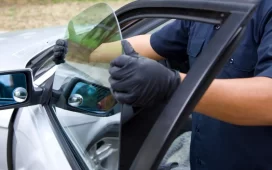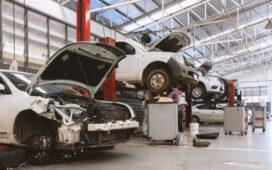Whether you work on your vehicle or simply carry it to the assistance community, it assists with knowing the normal pieces of a vehicle to pursue taught choices on vehicle upkeep. Utilize this manual to assist you with beginning and peruse our glossary for more data about various vehicle parts. Know more about auto parts
RADIATOR
The radiator is an intensity exchanger used to eliminate heat from the coolant in the cooling framework to keep your vehicle’s motor from overheating. The hot coolant is steered through the radiator, where the coolant can trade heat with the passing air.
Check the level of coolant in your radiator twice a year for general maintenance. While replacing a radiator can be done yourself, it can take most of the day. Use our guide to get the job done right if you need to replace your radiator. Additionally, as each vehicle is unique, you should consult the repair manual for your vehicle.
AC COMPRESSOR
The AC Compressor starts the process of cooling your vehicle by pumping coolant throughout the system. The AC system will not function without it. Since the heat of summer demonstrates the importance of your vehicle’s air conditioning system, we have provided instructions on how to recharge it and how to operate it. if it doesn’t work.
ALTERNATOR
An alternator is a device that produces electricity by converting mechanical energy into electrical energy using alternating current. It is utilized to supply capacity to your vehicle’s electrical framework alongside the battery. Mechanical energy generated by the vehicle’s moving parts is also used by the alternator to charge the battery.
If your battery doesn’t work or looks like it’s getting bigger, your alternator might have overcharged the battery or have a bad voltage.
AXLE
The vehicle’s front and rear axles are cross members that support the wheel hubs. Axles are another component of your suspension system that is in charge of transferring power from the engine to the wheels via the differential and transmission. They support the weight of each wheel by connecting them to the vehicle.
A “boot” is located on each end of a CV axle’s inner and outer joints. Boot failures typically result from a leaking or broken boot.
CATALYTIC CONVERTER
The catalytic converter is a stainless steel part of an automobile’s exhaust system that contains a catalyst for lowering tailpipe emissions of carbon monoxide (CO), hydrocarbon (HC), and oxides of nitrogen (NOx). It is used to reduce the environmental impact of exhaust gases and remove pollutants.
MUFFLER
The muffler, which is located just prior to the end of the exhaust pipe, is in charge of reducing the amount of noise that is produced by the exhaust system. It confines fumes gas stream, which prompts a calmer ride. Some mufflers restrict gas flow more or less, making the exhaust sound either quieter or louder.
TAILPIPE
The pipe that carries exhaust fumes from the catalytic converter or muffler to the vehicle’s rear is known as the tailpipe.






